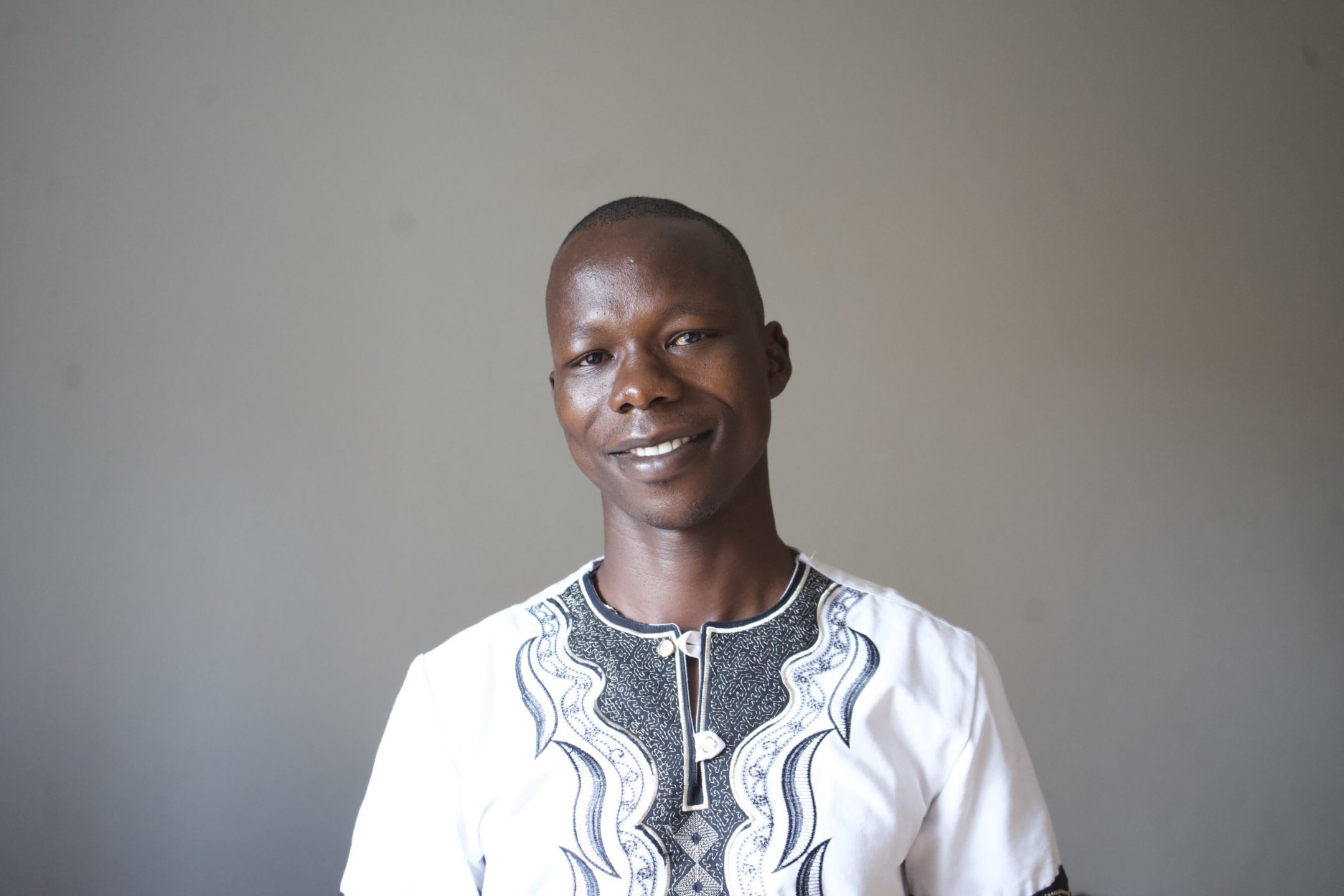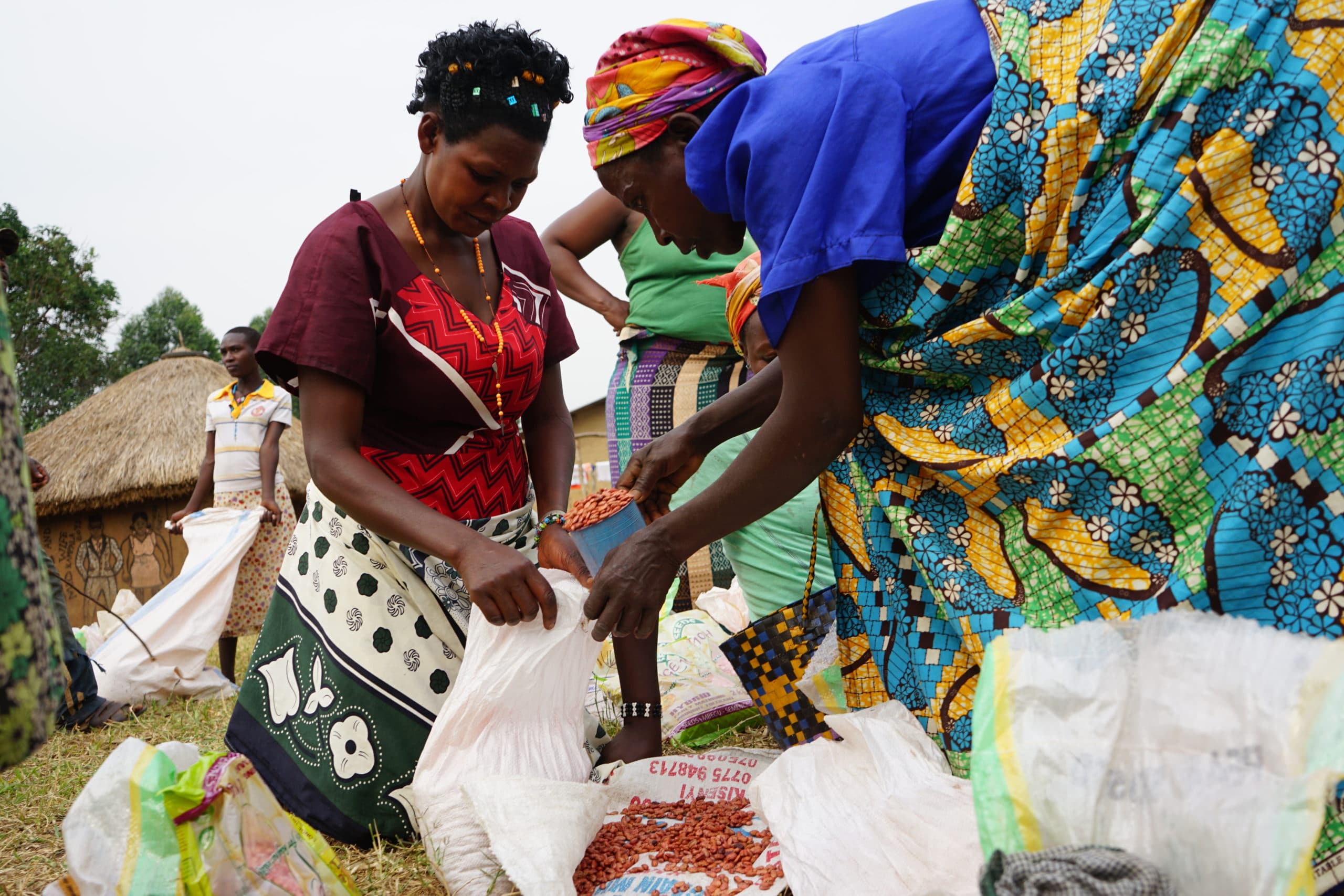Spotlight On: Agricultural Sustainability

In many last-mile communities, access to quality agricultural inputs makes it difficult to harvest high yields. To help ultra-poor communities address this challenge, Raising The Village introduced the seed pass-on methodology, a cost-efficient development approach that is both sustainable and community-building in its approach to ensuring all households have access to quality seed.
Bonny Ocen is Raising The Village’s Agriculture Extension Services Coordinator, and works closely with communities, RTV Implementation team, and Government Extension Workers to maximize agricultural impact. Today, he shares more about his role, and the key considerations on this results-based agriculture approach.
Tell us who you are and what you do at Raising The Village.
My name is Bonny Ocen and my role at Raising The Village is to support the organisation as we achieve our goal of ending ultra-poverty in the last mile communities in Uganda. In my role, I offer technical guidance in line with agriculture best practices, providing advice on mitigating the impacts of climate change, supporting in the design of strategy and implementation of agriculture approaches, capacity building of staff and stakeholders on agriculture-related thematic areas, leading in agricultural inputs distribution, documenting learnings and best practices, and guiding the technical team.
What is seed pass-on, and what are some of the advantages of using it?
Seed pass-on is one of RTV’s programmatic approaches whereby the most vulnerable partner households (first group) receive four varieties of improved high-quality seed, and other partner households (second group) are given two varieties within a seed pass-on approach. All households are then trained on how to plant, care for, and harvest their crops through good agronomic practices, which ensures improved harvests for households. For the second group that received two varieties as part of our approach, receive from the first group of program participants a prescribed quantity of seeds from their harvest. This means that after just one planting season, all households in a community have four varieties of improved seeds. This approach enables RTV to establish a sustainable and cost-effective way of supporting households with more varieties of seeds, which diversifies incomes and mitigates risks. This approach also ensures peer-to-peer accountability and increases ownership of the communities in the program.
To ensure the success of the pass-on, quality assurance is monitored by the community and the RTV team throughout the planting and harvesting process until the seed is passed on to the next group. This involves capacity building of the community, so they can distinguish between the seed and grain which they give to the second group.
After the second group receives and harvests their seeds, the final step is for them to return the same portion of seed to the VSLA, which is able to sell the seeds and share the earnings within the savings group. This further benefits the households as they increase earnings and save for future investments.
Ultimately, since communities are trained how to produce quality seeds to pass on, they are able to keep track of the production systems, and pass on to the next group. The mechanism is both community-empowering and sustainable over time.

How do you ensure there is equal distribution among communities?
RTV understands that some households need additional support immediately, and may not be suitable for the seed pass-on approach. To help us distinguish the most suitable approach for a given household, we conduct household mapping which enables proper planning and projection of the investment to a particular community. This captures the information about the needs of the community and other social aspects such as assets, land, and other resources available. We work with the local leaders and structures within the community which helps the organization to work best with the community and this ensures equal distribution among the community, with women, youth and the elderly typically prioritized for full support. The community is part of the decision making throughout the process as well. In doing so, we ensure households receive critical support while also increasing the cost-effectiveness of our programs. This helps RTV reach more people.

